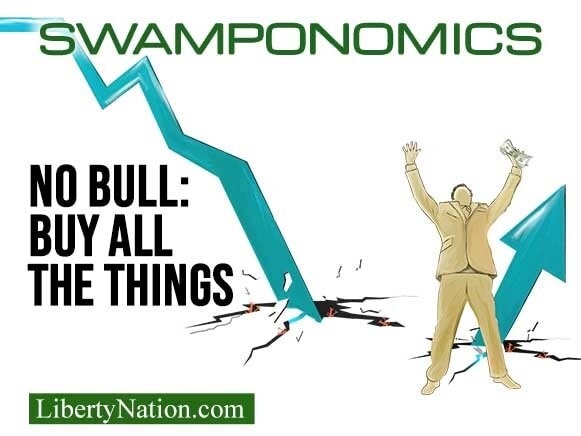“Gig workers get a break from Biden Labor Department.” That’s the title of an October 11 article by Emily Peck of Axios Markets. What break is Peck referring to? The Biden administration’s Labor Department proposed a regulation to get many “gig workers” classified as employees. Peck refers to this as a “pro-labor turn.”
Interestingly, Peck doesn’t explain why having the government classify gig workers as employees without taking account of gig workers’ wishes is good for those workers. Peck takes as given that they would want to be employees. But is that true? When economists observe people doing activity X when activity Y is an option, we tend to conclude that those people prefer X to Y. So if we observe millions of people choosing what’s variously called “gig work” or “independent contracting,” and there are millions of jobs available for those who want to be employees, the odds are high that those millions of gig workers want what they chose. Therefore, to argue for not allowing them to engage in gig work (the term I’ll use from now on), you need to show that they, by their own standards, would be better off as employees. That case has yet to be made.
These are the opening two paragraphs of my latest article for the Hoover Institution, “Give Gig Workers a Real Break,” Defining Ideas, November 17, 2022.
Another excerpt:
The Labor Department proposes six “economic reality” tests as a basis for deciding whether someone is an independent contractor or an employee: (1) “opportunity for profit or loss depending on managerial skill”; (2) “investments by the worker and the employer”; (3) “degree of permanence of the work relationship”; (4) “nature and degree of control”; (5) “extent to which the work performed is an integral part of the employer’s business”; and (6) “skill and initiative.”
The idea with (1) is that the greater the opportunity for profit or loss and the greater the managerial skill required, the more likely is it that the person is an independent contractor. With (2), the idea is that the greater the worker’s investment, the more likely he or she is an independent contractor. Interestingly on (2), the Labor Department states that buying one’s own tools is not “evidence of capital or entrepreneurial investment.” Hmmm. Tools are definitely a capital investment by any reasonable standard. Here the Biden Labor Department’s bias in favor of declaring an employment relationship is clearly on display. It’s on display in another way also. Notice the wording of (2) and also of (5). Both implicitly assume that the entity engaging a potential contractor is an employer and that the potential contractor is an employee. But isn’t that what’s supposed to be determined?
On (3), the Labor Department proposes that if the “work relationship is indefinite or continuous,” that argues in favor of the person being an employee. The department doesn’t bother to say why.
Test (5) is also interesting. It resembles the “B” part of California’s ABC test. It’s also incoherent. If the work is not integral to the employer’s business (oops—they’ve even caused me to assume that the entity wishing to engage a contractor is an employer), then why the heck does it want to engage a contractor? When a contractor delivers food to a restaurant, you can be pretty sure that that food delivery is integral to the enterprise. But how exactly would that make the food deliverer an employee? And if, by some chance, the Labor Department would exempt food deliverers from being employees, how would it justify that?
Interestingly, there is one huge gap in what the Labor Department calls a “totality of the circumstances” analysis, a gap that gives the lie to any claim that the Labor Department will consider all the circumstances. Can you guess what that gap is? I bet the Labor Department can’t but many independent contractors can. Not even mentioned is whether the contractor wants to remain a contractor.
Read the whole thing, especially if you want to comment and more especially if you want me to respond to your comment.
If you want to see my humorous remark, read my Disclosure at the end. I’m surprised, but delighted, that Hoover’s editor let me keep the last line.
















